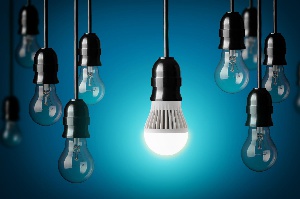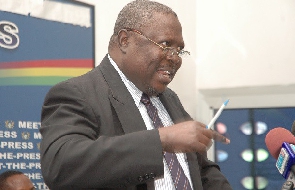As part of the Energy Ministry’s effort to conserve energy, a total number of 12 million LED lamps will be distributed throughout the country under a cost-recovery credit programme to be operating through a local bank, a Parliamentary report has revealed.
According to a report of the Select Committee on Mines and Energy on the Annual Budget Estimates of the Ministry of Energy for the year ending December 31, 2018, a total of 12 million LED Lamps will be distributed.
The switch, experts say, has the potential to reduce energy consumption by 50% from the current compact fluorescent bulbs’ usage.
The importance of investing in energy-efficient products cannot be underestimated, as it helps consumers save money and also helps to sustain the national grid.
The previous NDC administration switched almost 6 million government incandescent bulbs to compact fluorescent lights in 2007 before announcing it was prepared to take the next step and replace those lights with LED ones.
A study by Shigeru Suehiro and Yoshiaki Shibata in 2011 indicates that LED lamps are still expensive compared with incandescent lamps and fluorescent lamps, but have greater electricity saving potential.
The report further states that an estimated number of 69,250 150W LED streetlights complete with fixtures will be supplied to various Municipals Metropolitan District Assemblies (MMDAs) across the country.
Currently, the total electricity demand of the nation – according to the Energy Commission, is 2,533MW for homes, schools, businesses, and industries.
Presently, VRA and other Independent Power Producers (IPPs) together have an installed capacity of about 3,644MW.
Access to cheap power remains the long-standing concern of businesses that are yet to fully recover from the shocks of half a decade of erratic power supply.
However, constraints on fuel sources for power generation — crude oil, gas and water for hydro power generation — have necessitated the need for exploring cost-effective, reliable, and clean energy sources.
Given the current gas demand of about 450Mscf per day, indigenous gas and limited supply from the West Africa Gas Pipeline are unable to meet demand.
With the coming on-stream of more oil and gas fields, the volume of indigenous gas is expected to increase in the medium-term. Available indigenous gas is however expected to run out by 2036, according to energy experts.
Business News of Tuesday, 6 February 2018
Source: thebftonline.com

















